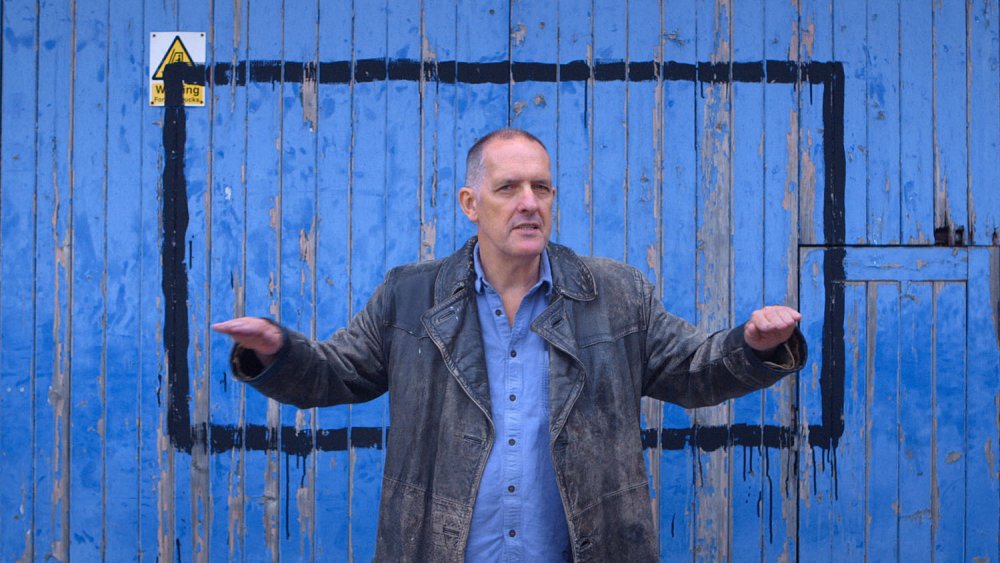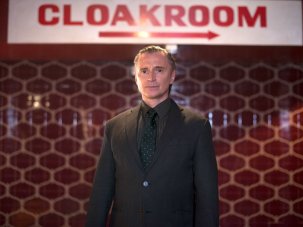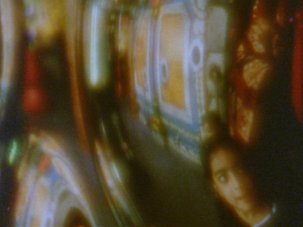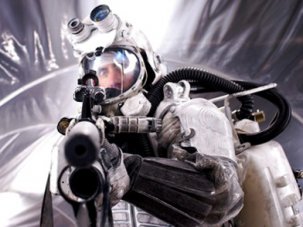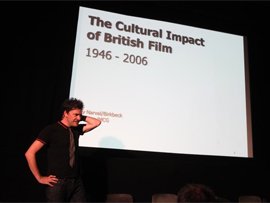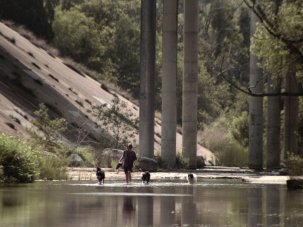Monday morning is an unpropitious time to begin to attend a film festival; it’s when the first flush of celebrity guests has been ushered in and out and the energies of the festival team are being fostered for later in the week. Smaller, less impactful or dire films tend to be quietly rolled out then. Prior commitments over the weekend of 20/21 June meant I was stuck with this circumstance; but I had, in any case, seen many of the bigger films already screened – Amy, 45 Years, Inside Out. Still, that Monday start may be why I misjudged the first film I saw, Imagine Waking Up Tomorrow and All Music Has Disappeared, a documentary about the work of Bill Drummond, former member of the music act KLF, who were notorious for having publicly burned £1 million in cash and deleting their entire back catalogue.
Edinburgh International Film Festival 2015
17-28 June 2015 | UK
Drummond is a commanding presence, and this Swiss-German-produced documentary mostly focuses on The17, an impromptu choir whose members (an indeterminate number) Drummond recruits from ordinary folk in ordinary situations – a factory floor, an elderly ladies’ religious group, construction workers, an extended Asian family. My false impression was that the film was under Drummond’s control. Certainly the way it structures the progress of the music piece he is making – for which he visits and cajoles different folk along a line of latitude to do a few minutes of single notes, phrases or chants – follows a throwaway logic consistent with KLF.
And Drummond comes across as someone haunted by his former celebrity. It’s as though he has to keep doing things and talking them up so as not to re-churn to his big moment in the media spotlight. Though his work with The17 is mildly intriguing, its extracurricular feel gives the film the unfortunate air of a vanity project, especially when he is eventually asked to reflect on the KLF days. It wasn’t until days after the screening that I learned that all of the film’s decisions were made by its director, Stefan Schwietert – which itself creates an interesting KLF-like conundrum about the illusion of authorship.

Chuck Norris vs. Communism (2015)
Given that the EIFF happens just two weeks after Sheffield Doc/Fest, it’s surprising how strong their doc programming is. As well as Amy, they had the following: Ilinca Calugareanu’s Sundance favourite Chuck Norris vs. Communism, about the video screenings of Hollywood films that helped undermine Ceausescu’s regime, which first over-explains itself and then becomes a fascinating tale of entrepreneurs outwitting party bosses that ought to inspire a stirring fiction version; Arturo Gonzáles Villaseñor’s spectacular Ambulante hit All of Me [see our Ambulante report], which profiles the women of La Patrona, who spend most of their time preparing easily snatchable free packages of food and water for the migrant workers who ride through the town on freight trains; and Michael Ramsdell’s searing study of the rape of the Congo’s mineral wealth by corporations When Elephants Fight (which I wrote about from Bermuda).
But the standout, from an audience point of view, was The Wolfpack, an insight into the insular lives of the six Angul brothers, young men (ranging in age from mid-teens to early twenties) restricted for most of their lives to their parents’ apartment in Delancey Street on Manhattan’s Lower East Side (“One year we went out eight times, another year we didn’t go out once”), where they were ruled by their Peruvian Hare-Krishna father Oscar, and home-schooled by Susanne, their Midwestern mother.
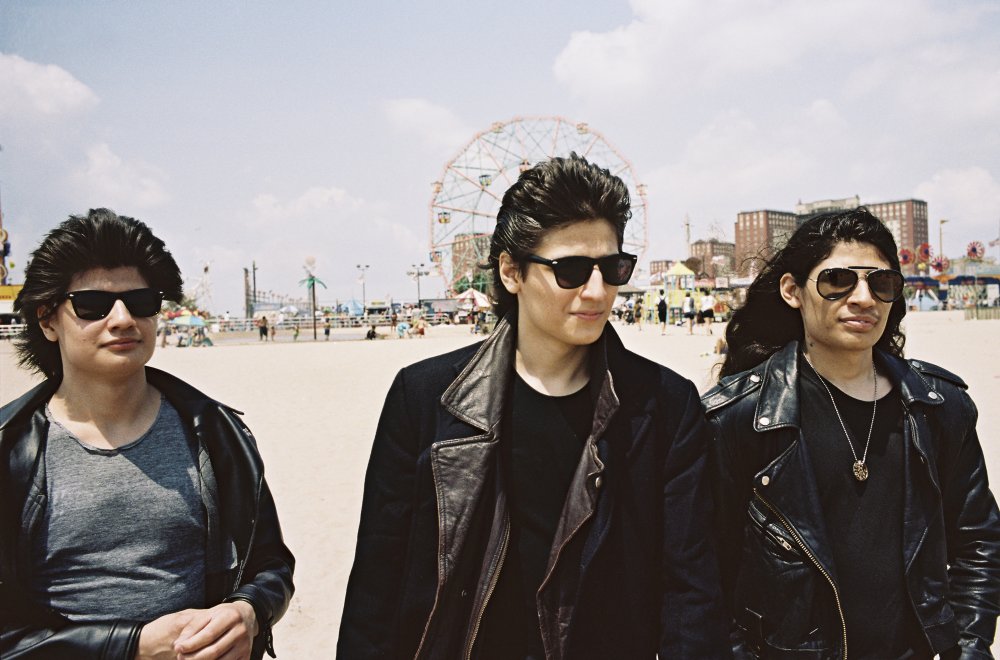
The Wolfpack (2015)
A major part of their education, it transpires, has been the movies: not only watching them but acting them out in self-made costumes. Reservoir Dogs, for instance, is the most obvious influence on their shared iconography. The Wolfpack catches the brothers at the moment of rebellion, when they’ve started to go out into the streets of their own volition, and they go all in black wearing shades. It’s a compelling record of a family in transition that came about through happenstance. Director Crystal Moselle saw the brothers on the street and decided to approach them, and it was when she told them she was a filmmaker that they warmed to her and began to reveal themselves. Far from being under-educated, they come across as impressively articulate and sensitive. Three of them took part in a Skype interview after the EIFF screening, and while it was clear that they had survived something authoritarian and somewhat sinister, happily they had become people who thrive in a cultural environment.
As for the festival’s fictional offering, the most impressive US indie film I saw was Diary of a Teenage Girl. Filmhouse 1 was packed for the screening, mostly with women in their twenties, there perhaps to catch a glimpse of Alexander Skarsgård, the True Blood star, who came on stage at the end with his British co-star Bel Powley. It’s really more Bel’s film, because she brilliantly breathes pulsating life into Minnie, the sexually precocious 1970s Californian teen of the title whose own burgeoning desires see her lose her virginity with the thirtysomething Monroe (Skarsgård), one of her mother’s boyfriends.
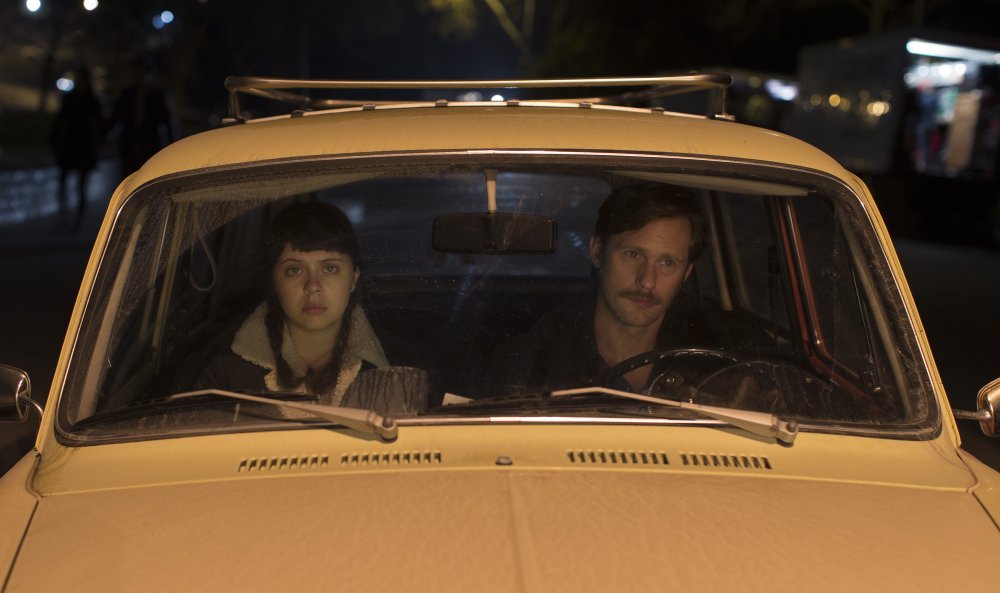
The Diary of a Teenage Girl (2015)
An insatiably curious wannabe cartoonist, Minnie’s been left to her own devices and desires by her irresponsible mother, Charlotte (Kristen Wig), who does not want to think her underage daughter has sexual yearnings. Monroe – an awkward role to play for Skarsgård – is not remotely creepy but rather the kind of unthinking, laid-back person happy to enjoy whatever sensual pleasure is easily in reach. The films’s candour about sex from a young woman’s POV is totally refreshing and director Marielle Heller is bravely matter-of-fact in the way she portrays both Minnie’s inner life (often using illustrations – the film is an adaptation of Phoebe Gloeckner’s graphic novel of the same name) as well as her sex life. The 1970s setting makes the age-of-consent-breaching sex at least plausibly less troubling than it would be in a present-day film.
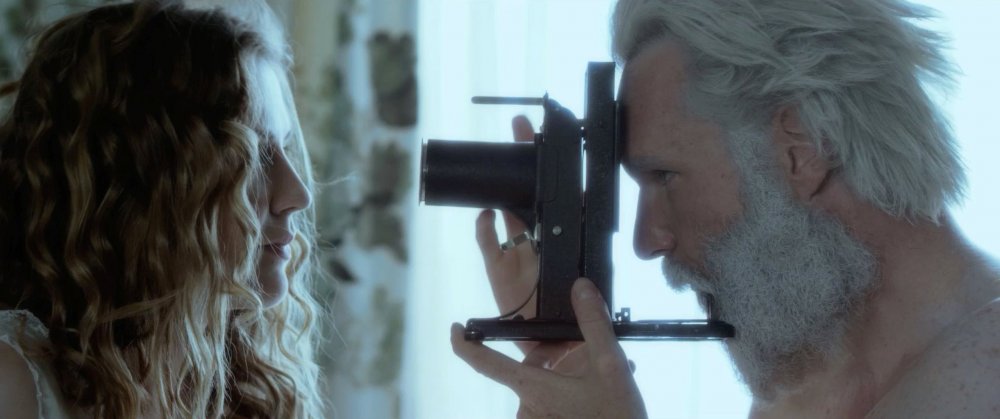
Eadweard (2015)
Several disappointing films could be outlined here, not least from the British contingent, but S&S’s other gloomier Edinburgh roundup has pre-empted at least the latter. Canadian Kyle Rideout’s biopic of Eadweard Muybridge, Eadweard, explains his revolutionary motion-capture techniques winningly but is otherwise too whimsical about his eccentricities and is altogether too pleased with itself. Hungarian Károly Ujj Mészáros’s Liza, the Fox-Fairy wants us to luxuriate in the ultra-kitsch fantasy world of a 1960s care nurse who’s haunted by a Japanese pop star ghost and may be turning into a sad demon herself. Sadly only sad demons will love it.
The best experiences came from diverse sources. I’ve been looking forward to seeing Michael Mann’s debut TV movie The Jericho Mile on the big screen for some time, and it didn’t disappoint. Shot on site in Folsom prison and using many of the inmates as cast, the film is a grand parable that revolves literally not around but with Rain Murphy (a storming performance from Peter Strauss) a lifer who uses running circuits as a method of transcending his circumstances. When he’s discovered to be one of the fastest men in America, the prison authorities try to aid his bid for the US Olympic trials, but other factors push the prison close to a race war. Imbued with an authentic claustrophobia and menace, the movie makes it easy to comprehend how the Folsom experience marked Mann to such an extent that 36 years later you can still find echoes of it in his most recent film Blackhat.
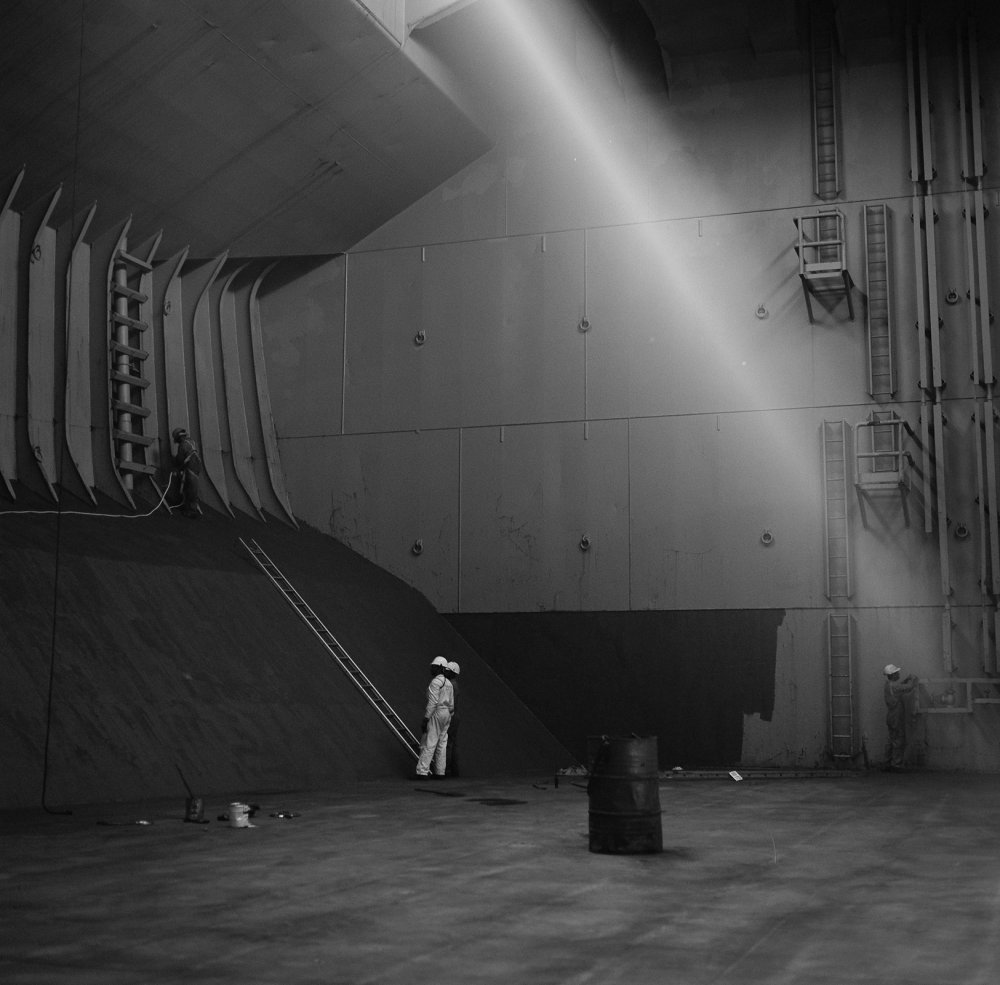
Transatlantique (2015)
Following a Bengali sailor on a 30-day voyage aboard a cargo ship, Montreal Canadian Félix Dufour-Laperrière’s Transatlantique is pure seduction. Shot in black and white, in static tableaux, with no voiceover and not much dialogue to speak of, yet simply put together from poetic shots of the sea, dramatic shots of the ship smashing through it and intimate scenes in the cabins and galleys, it has a rare precision of vision. To give you an idea of its scale and ambition, it does a brilliant job of making a cricket match played in the huge empty bowels of the ship fit gently with its brooding aesthetic.
There is one British film I wanted to mention, Black Mountain Poets, an improv comedy shot, apparently, in just five days. Alice Lowe, of Sightseers fame, and Dolly Wells, best known for TV’s Doll & Em, play two obscurely criminal stepsisters (one assumes) who steal the car of cult posh hippie poet sisters and impersonate them on a mountain retreat weekend in Wales, where they both fall for Tom Cullen’s handsome blocked bard. Brimful of bitter deadpan banter, and populated with deliberate caricatures, the film ties itself into deliriously self-deprecatory knots as it self-mocks itself into a zone of funniness unimaginable anywhere else. It’s not exactly ‘cinema’ but it is distinctive and I loved it.
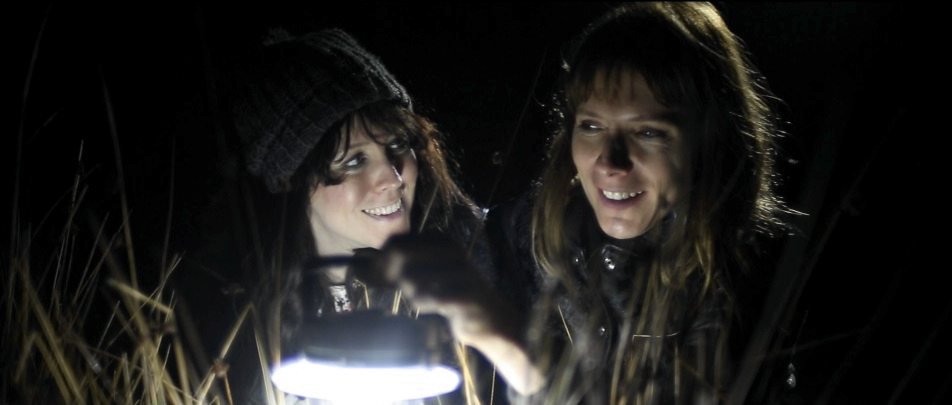
Black Mountain Poets (2015)
The festival seemed unusually comfortable with itself under the new leadership of Artistic Director Mark Adams. I should say at this point that I am friends with nearly every EIFF AD from the past 20 years (and some from earlier), and Mark is no exception – he used to live in the next street from mine. Everyone writes about his affability, so much so that he must be sick of it already, but his ease with people, his broad taste and his contact book are the kind of assets Edinburgh needs. Ever since the festival moved away in 2008 from the August dates of the Fringe and into its own June slot there has been carping as to whether or not this was a wise move. In terms of box office the change has worked, but it’s been harder for the EIFF to attract big international guests.
What’s changed this year, on my impression, is that the date no longer something they’re prepared to agonise about. The 1990s and 2000s were the boom years for festivals. These present times are tougher and more competitive. Glasgow has its own burgeoning success of a festival, Sheffield has become more important in the calendar. But to move back would pit the festival against San Sebastian, Venice, Telluride, Toronto and New York and lose them audiences and facilities and cheaper hotels. EIFF sees its job as holding its end up, and they do that pretty well.
-
The Digital Edition and Archive quick link
Log in here to your digital edition and archive subscription, take a look at the packages on offer and buy a subscription.




